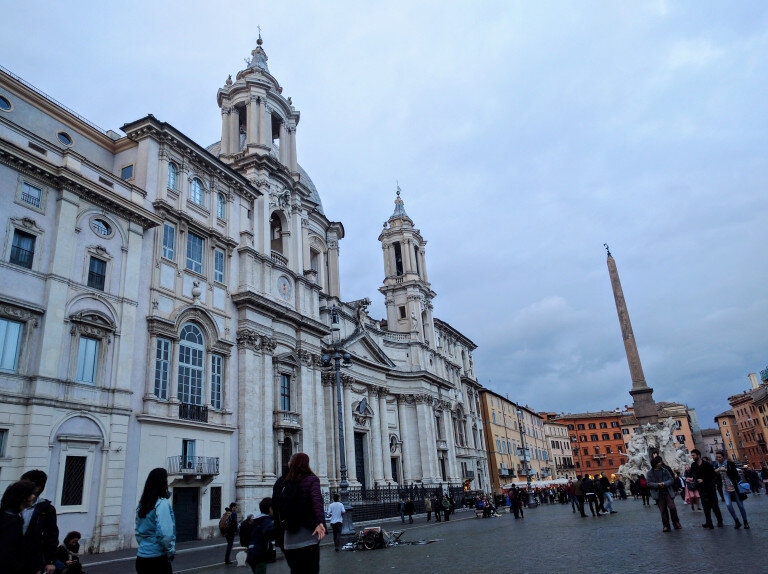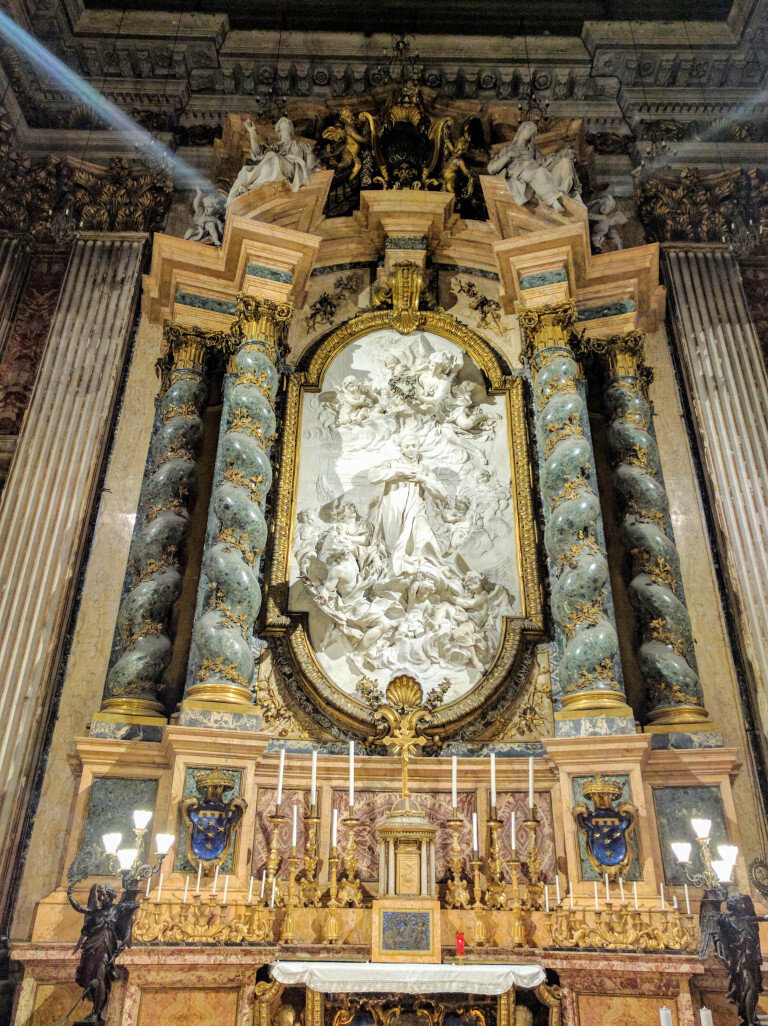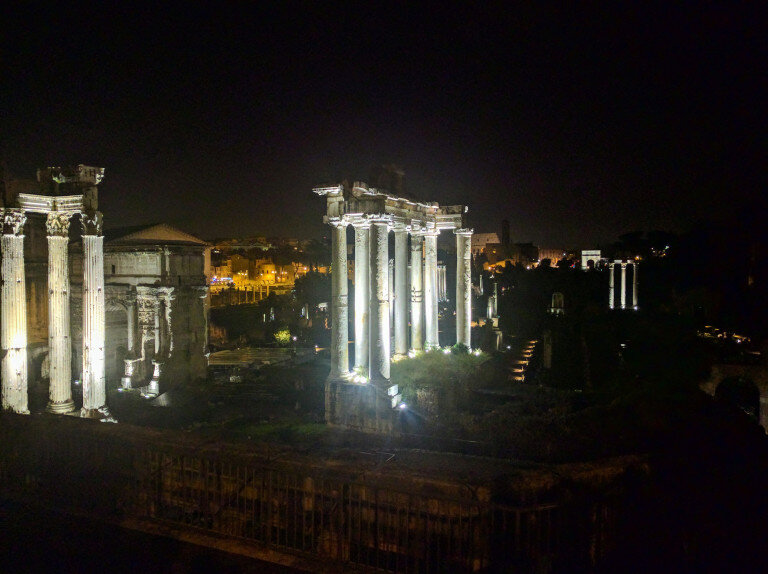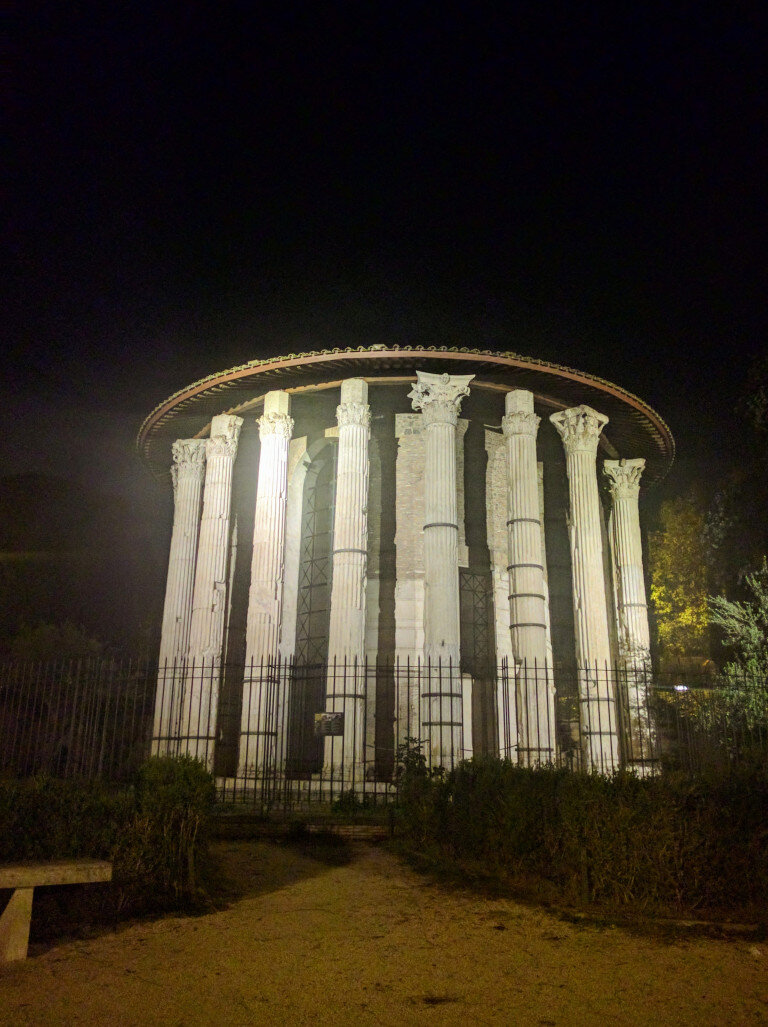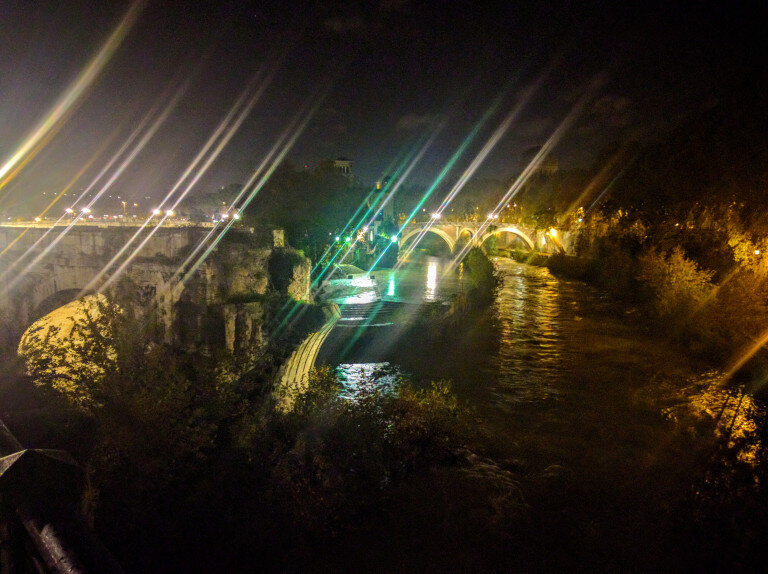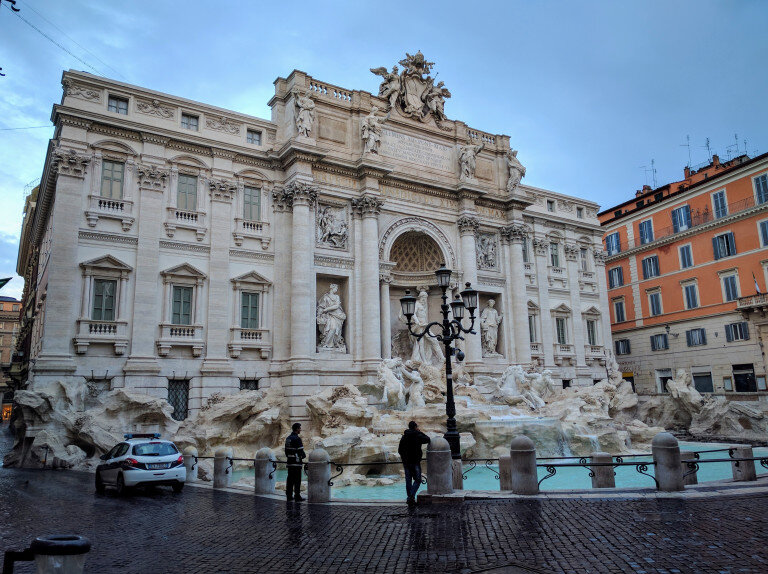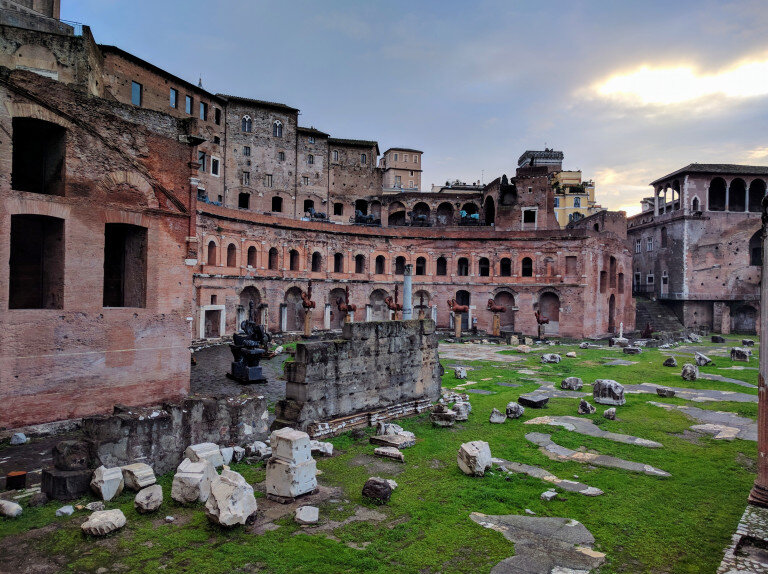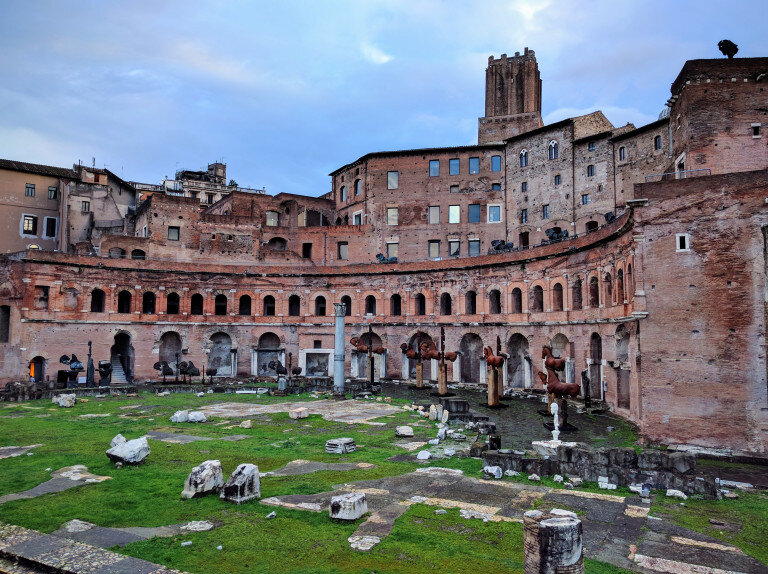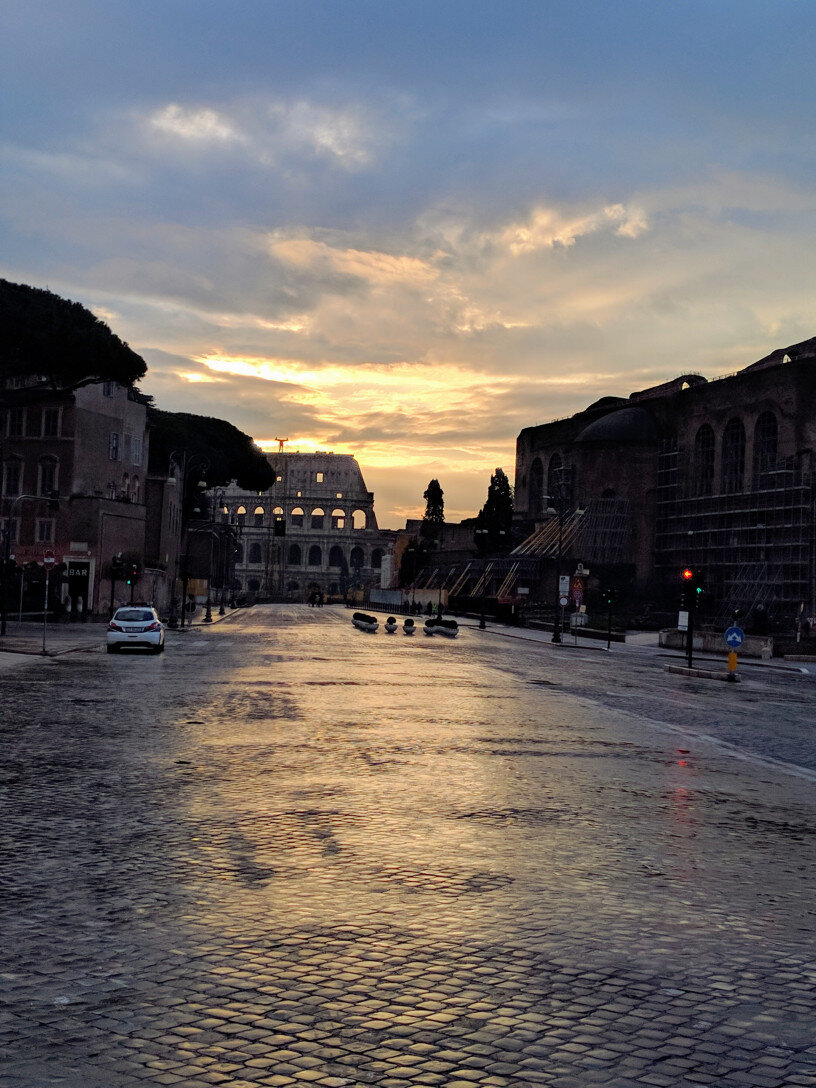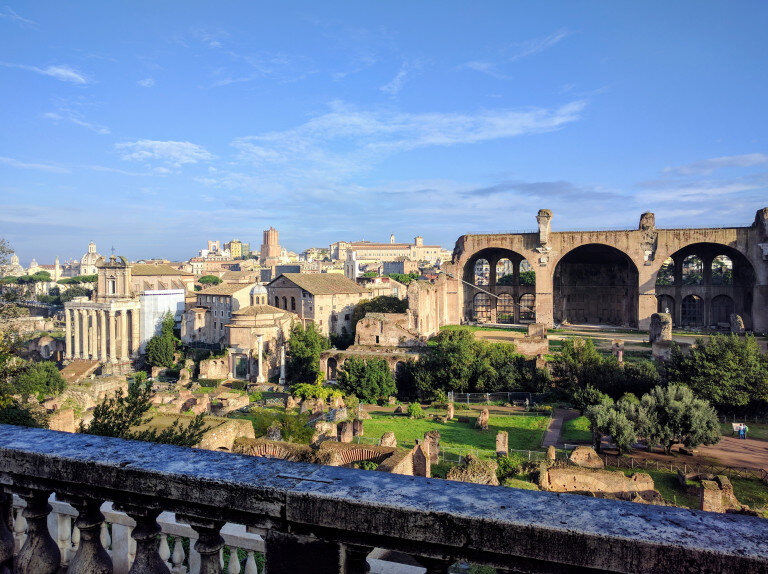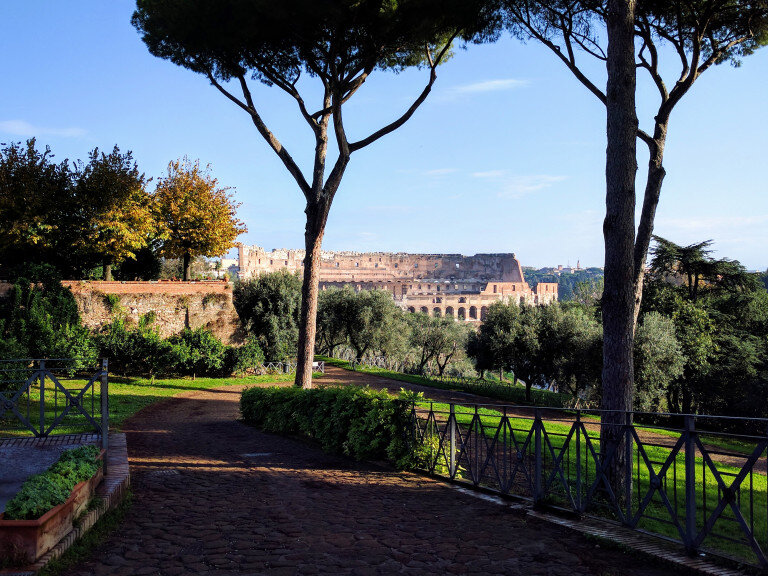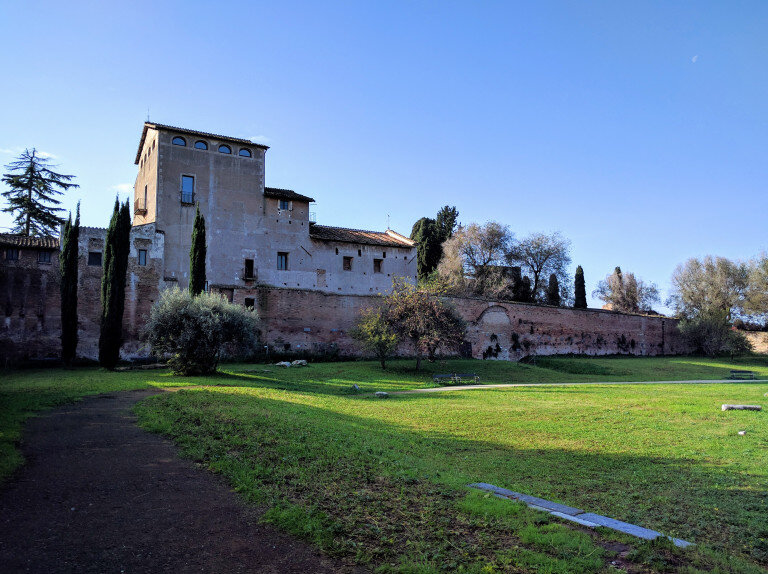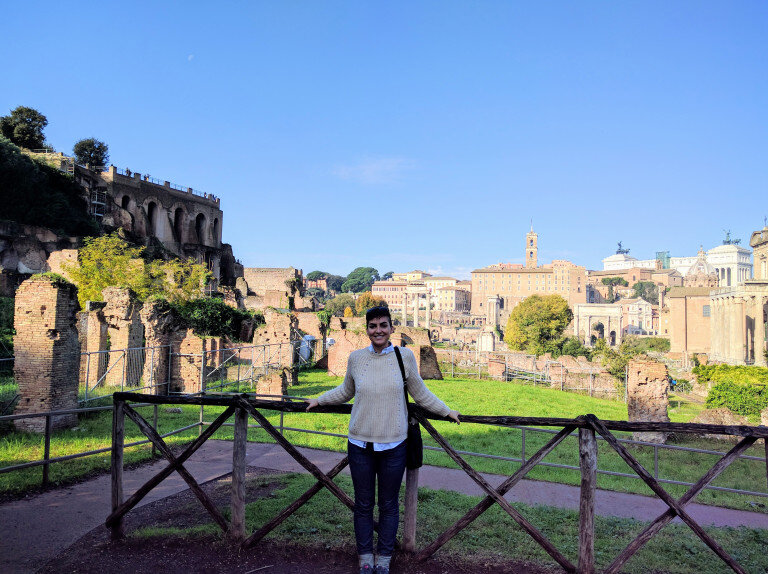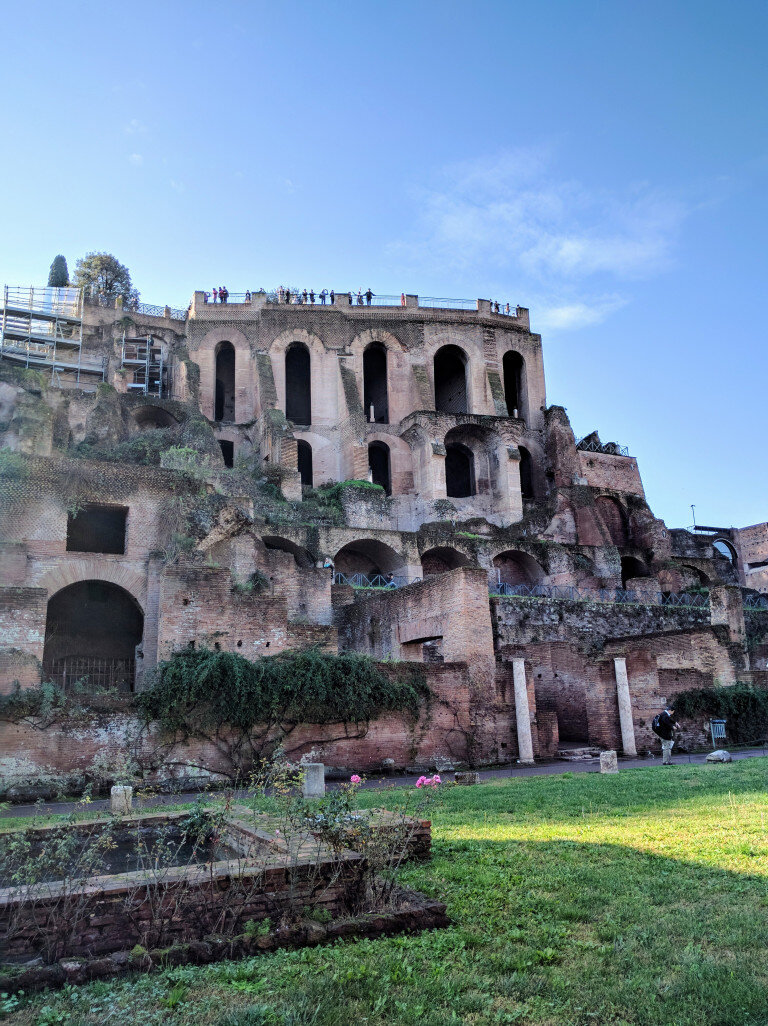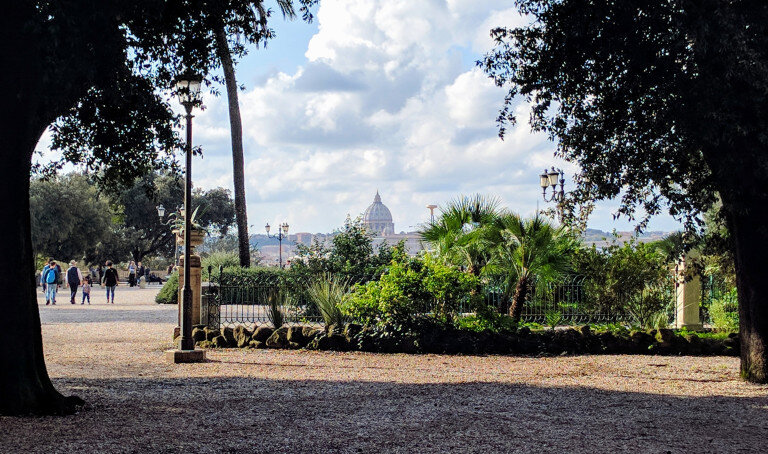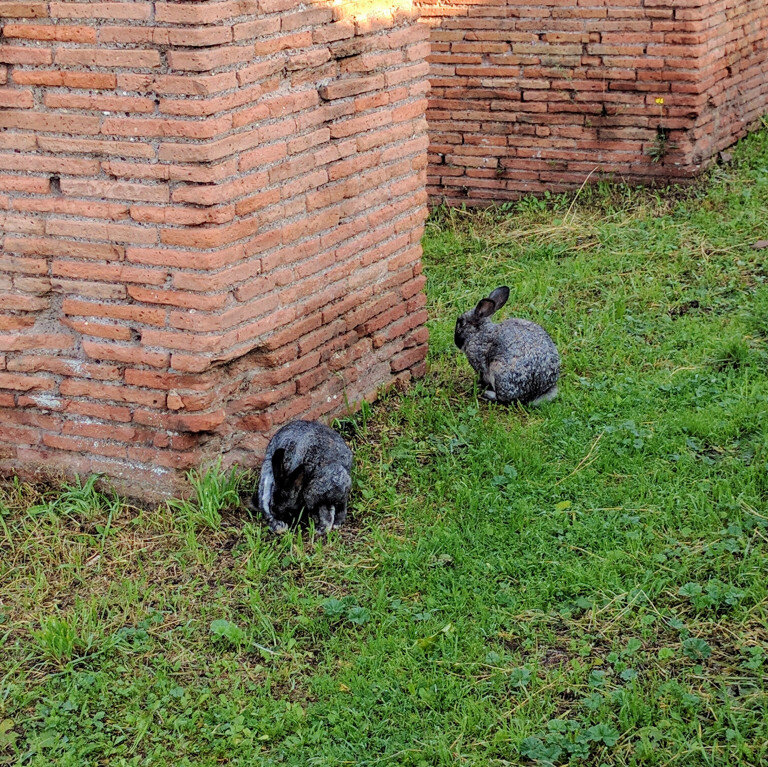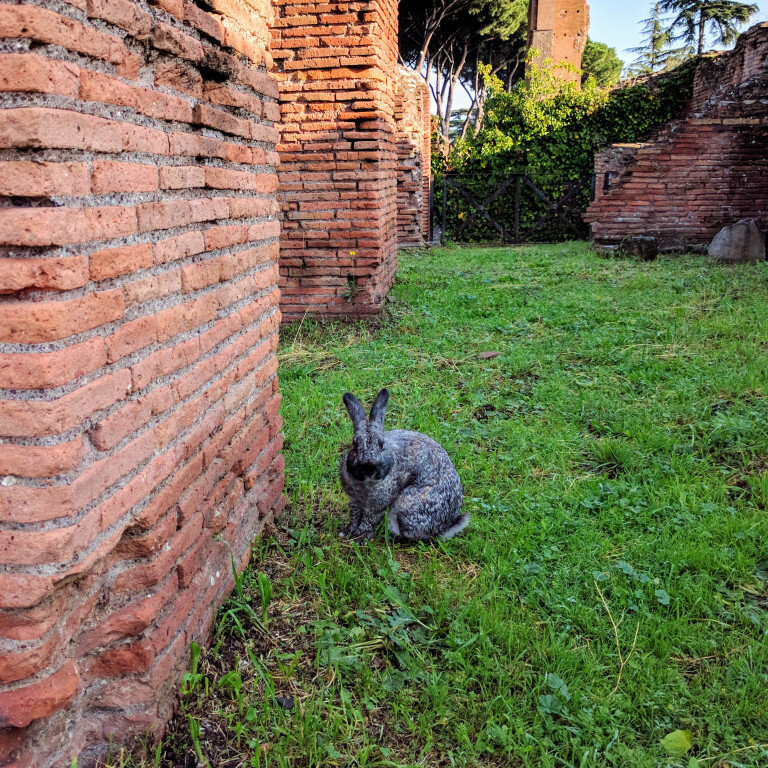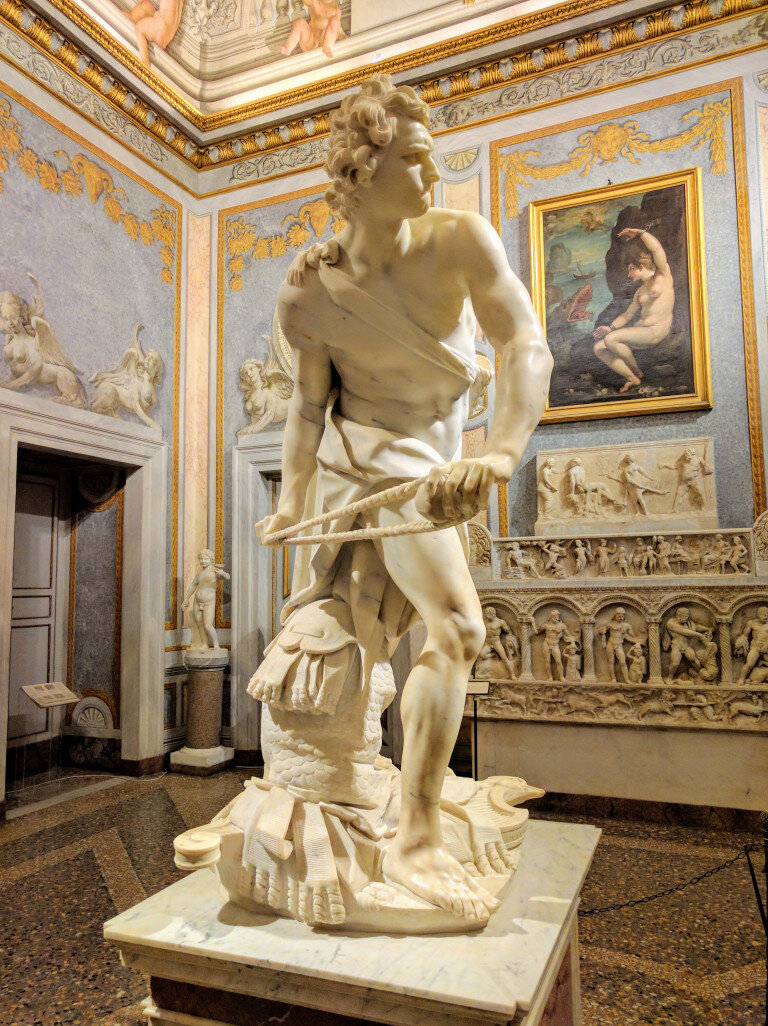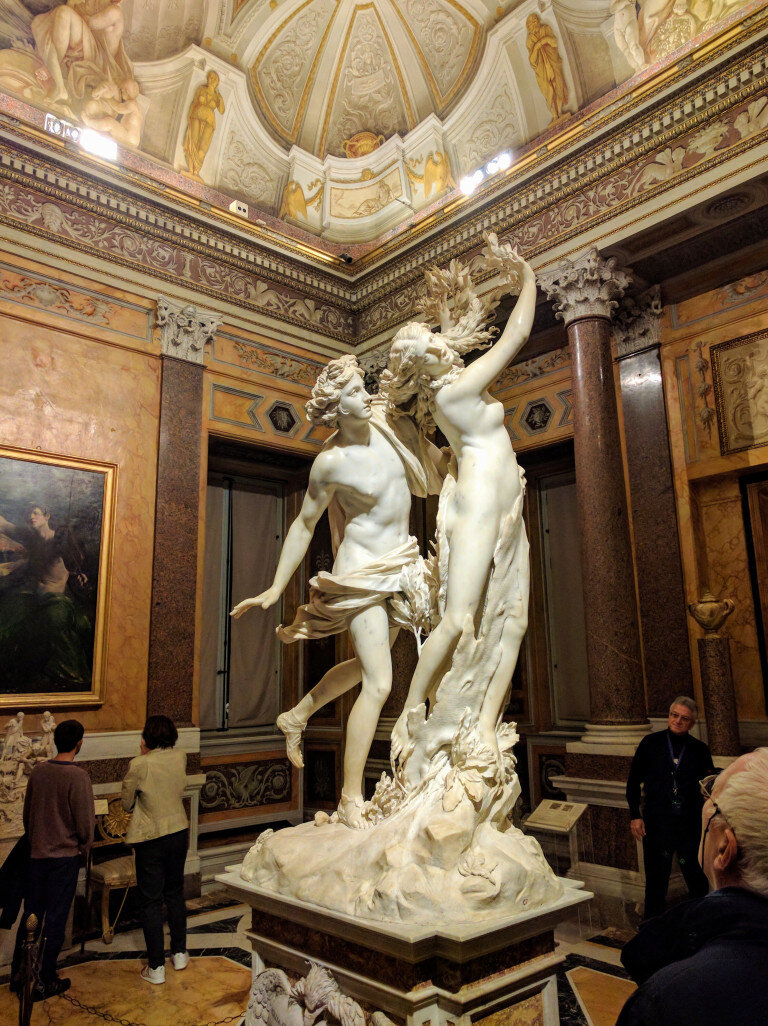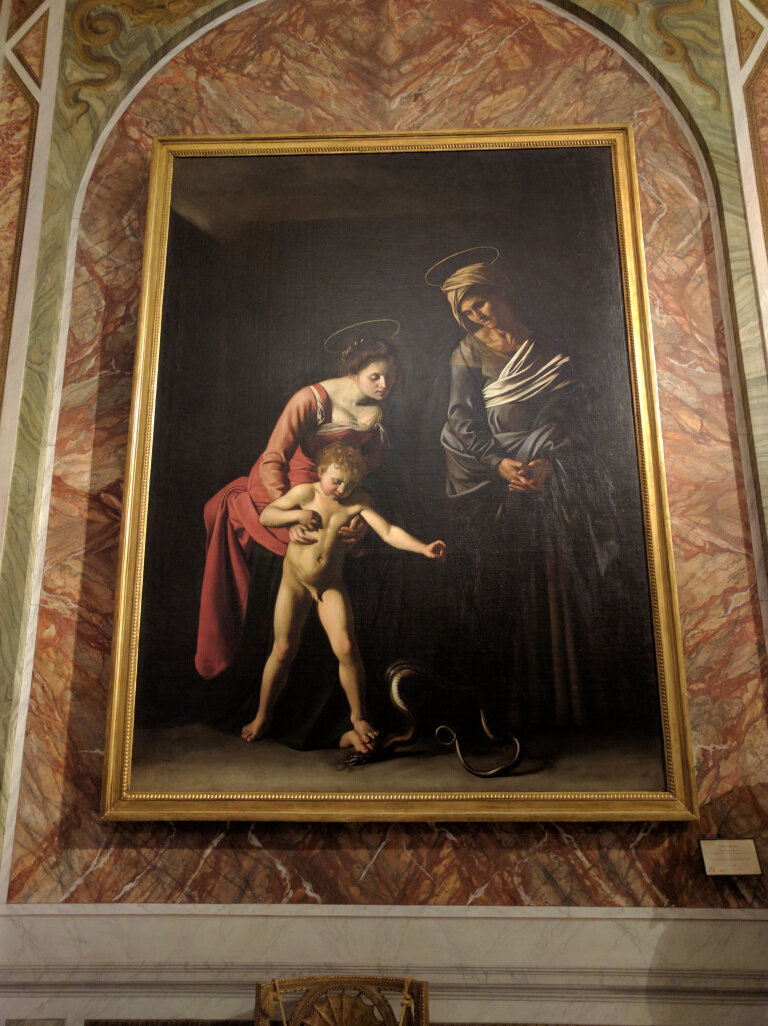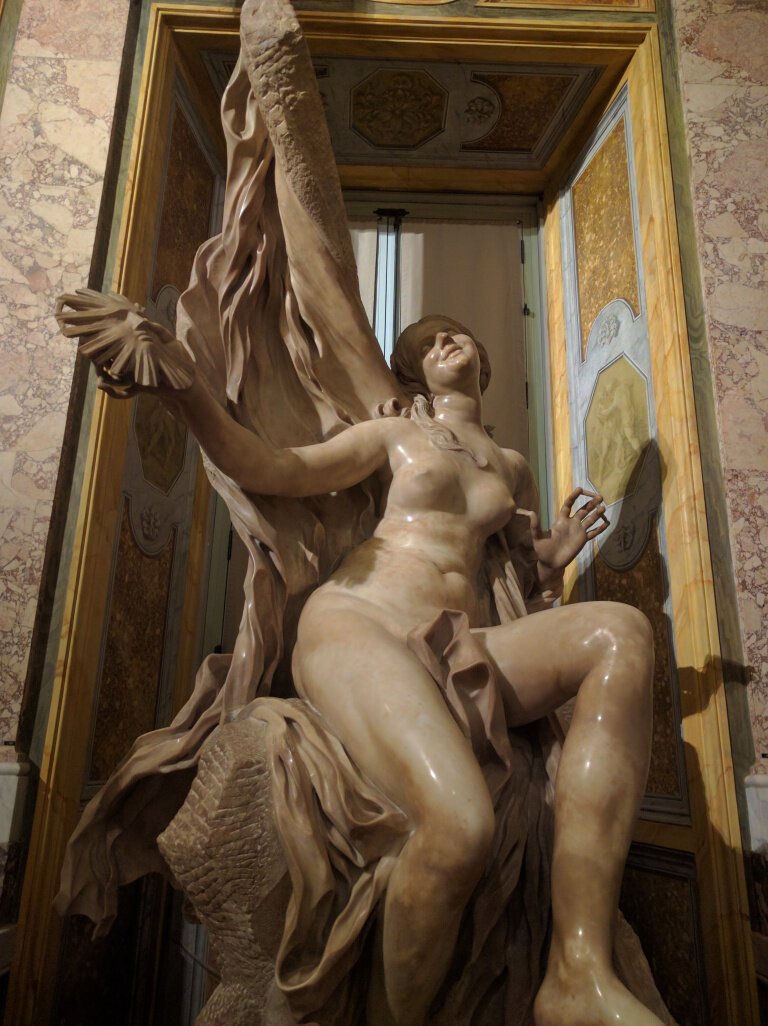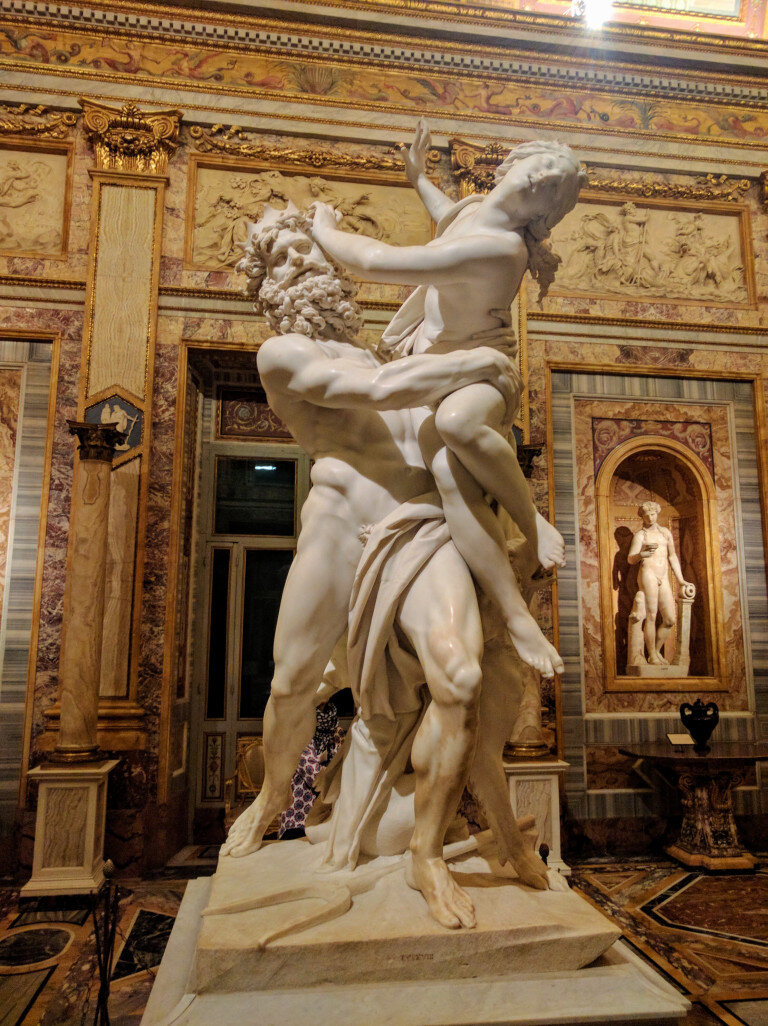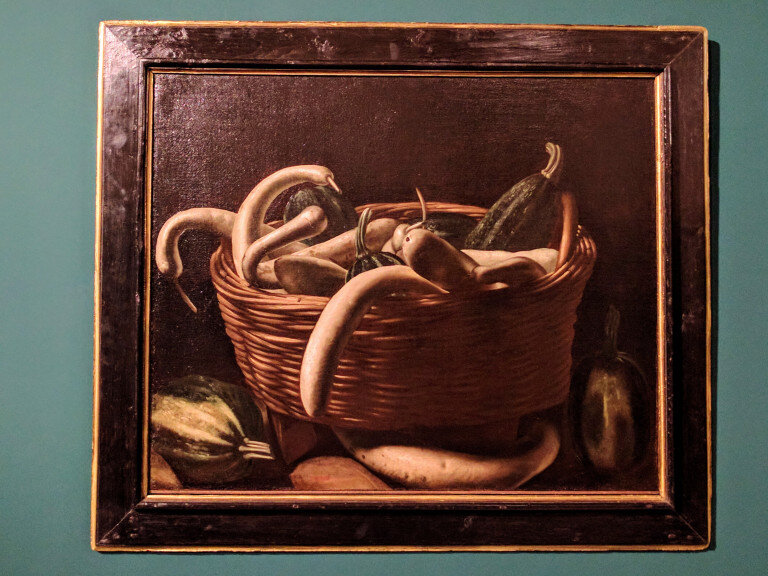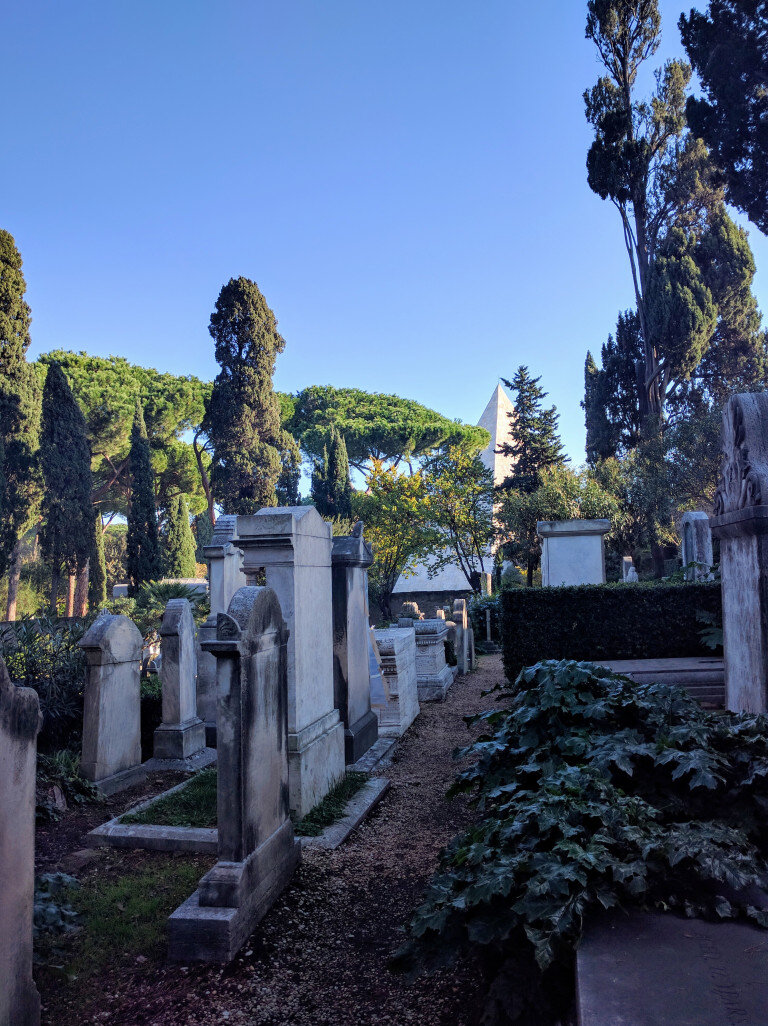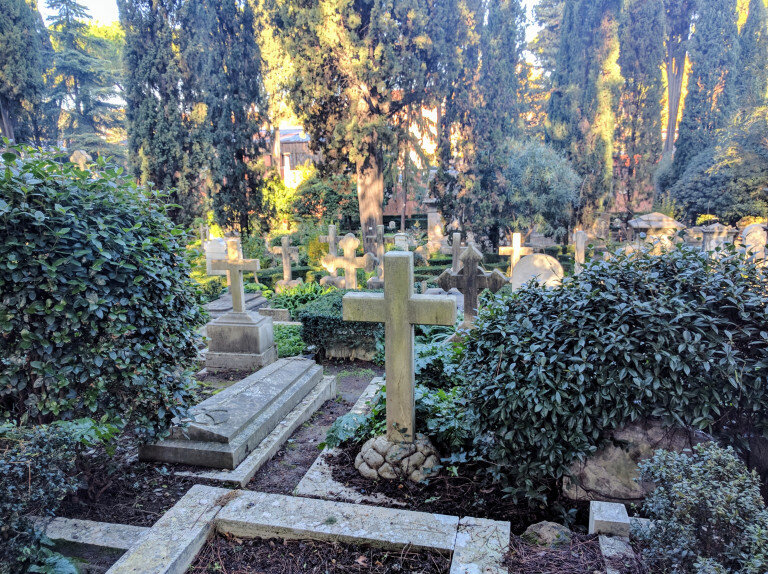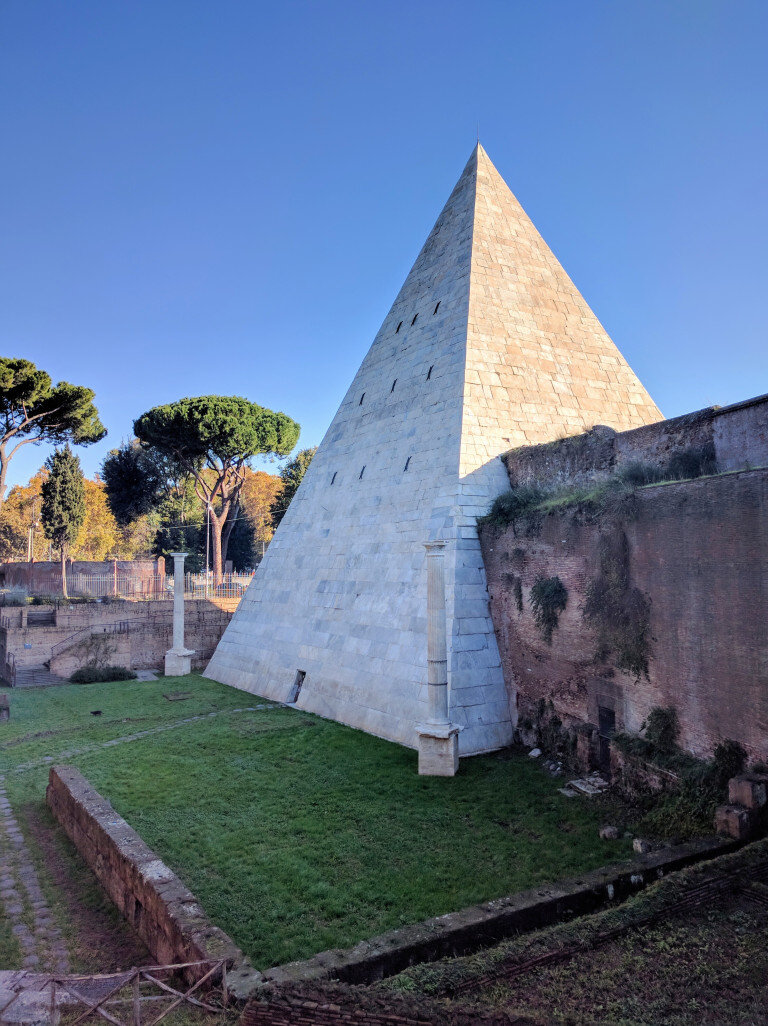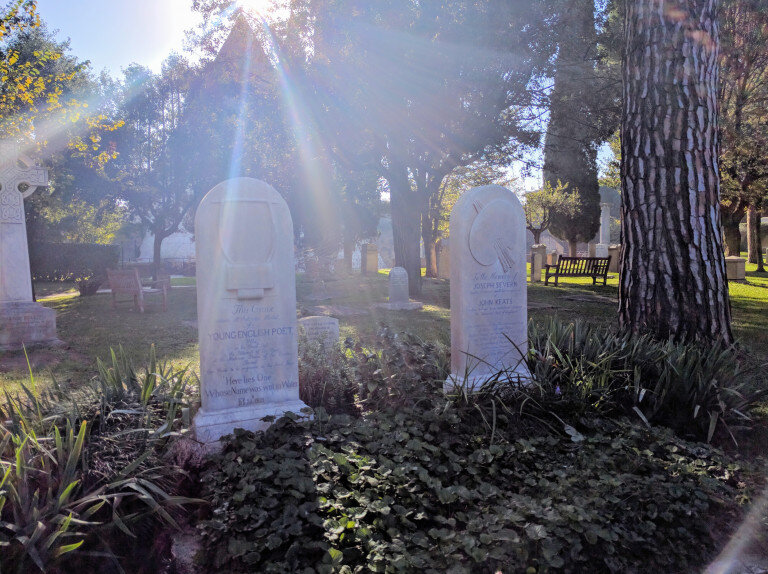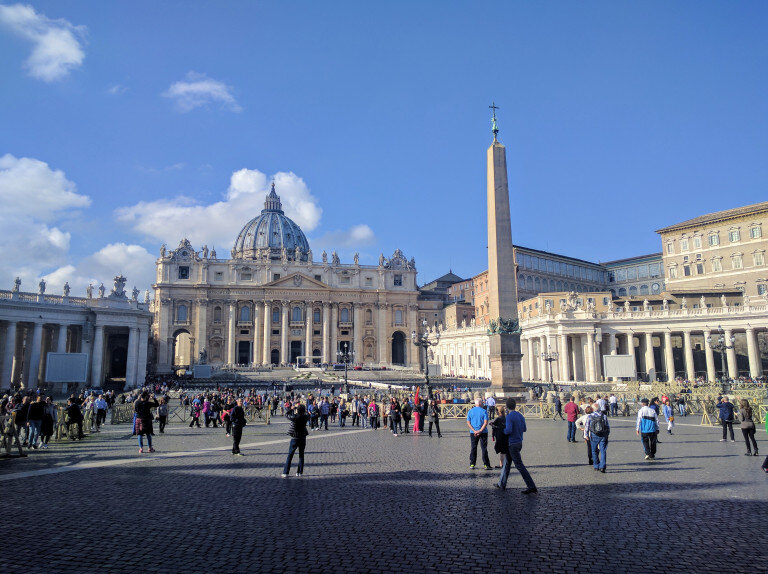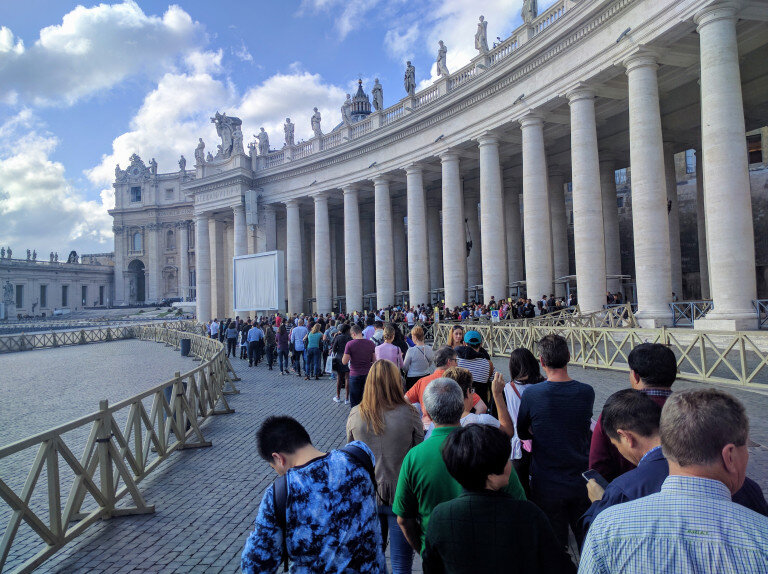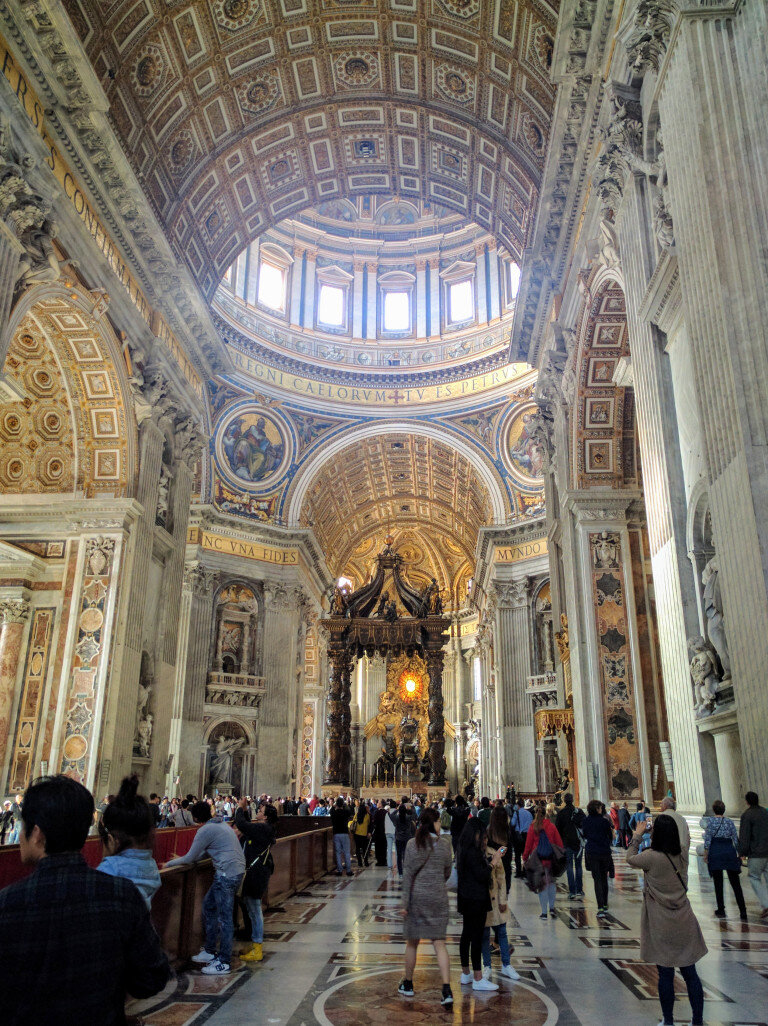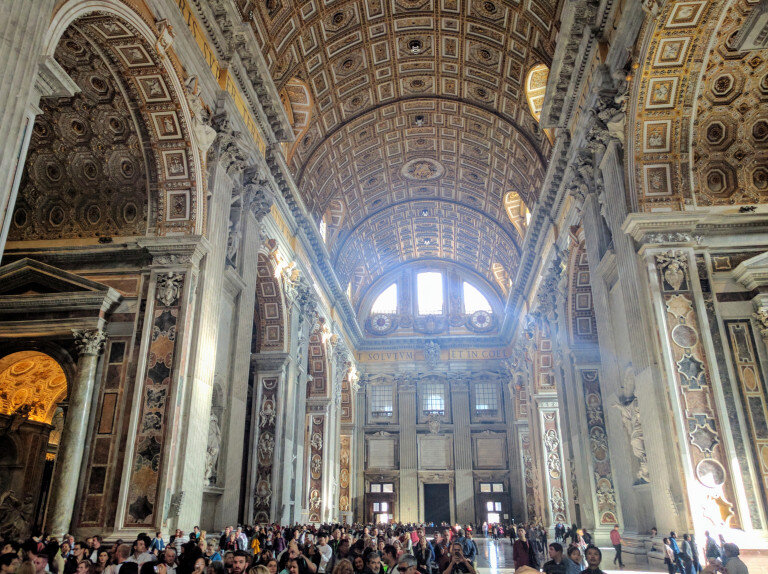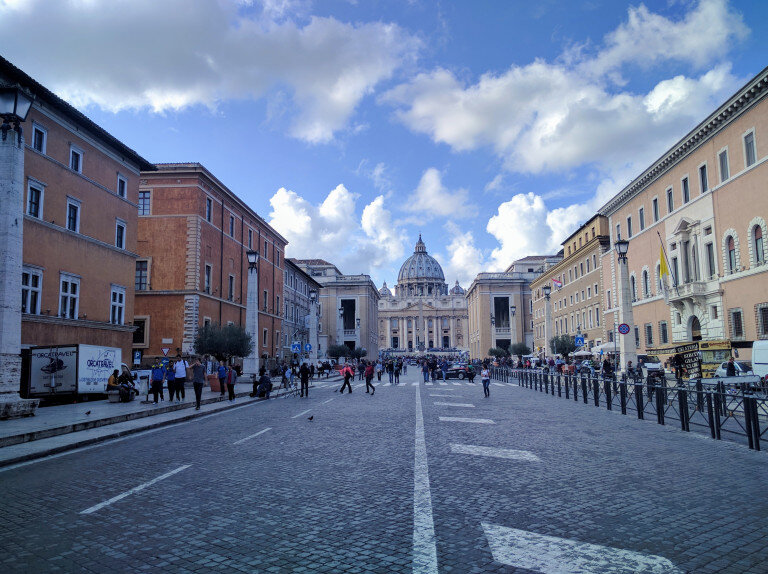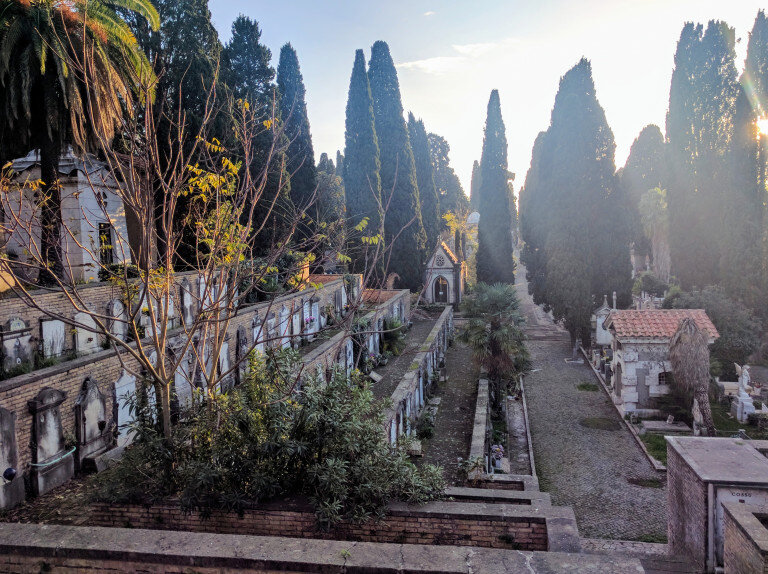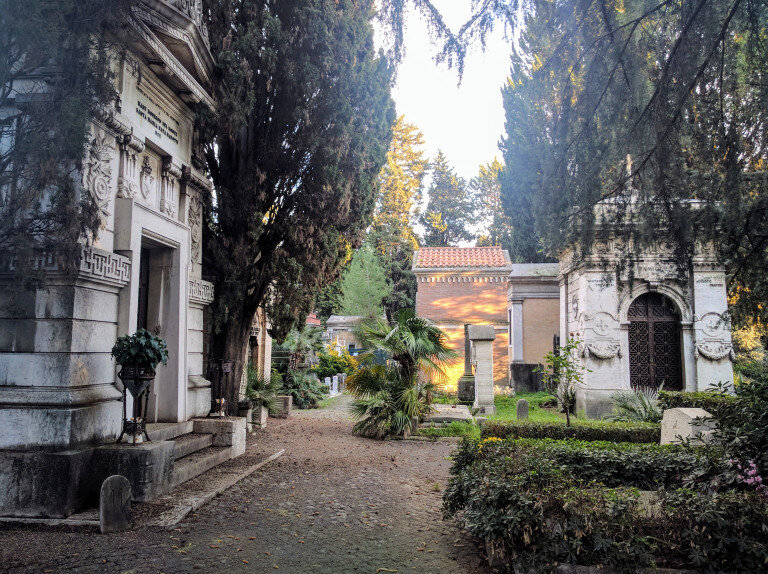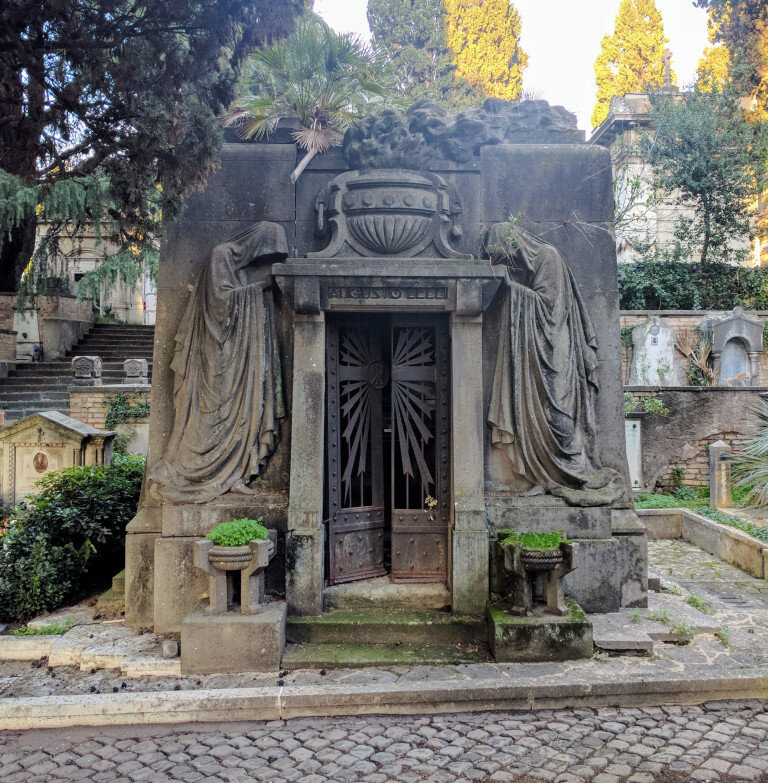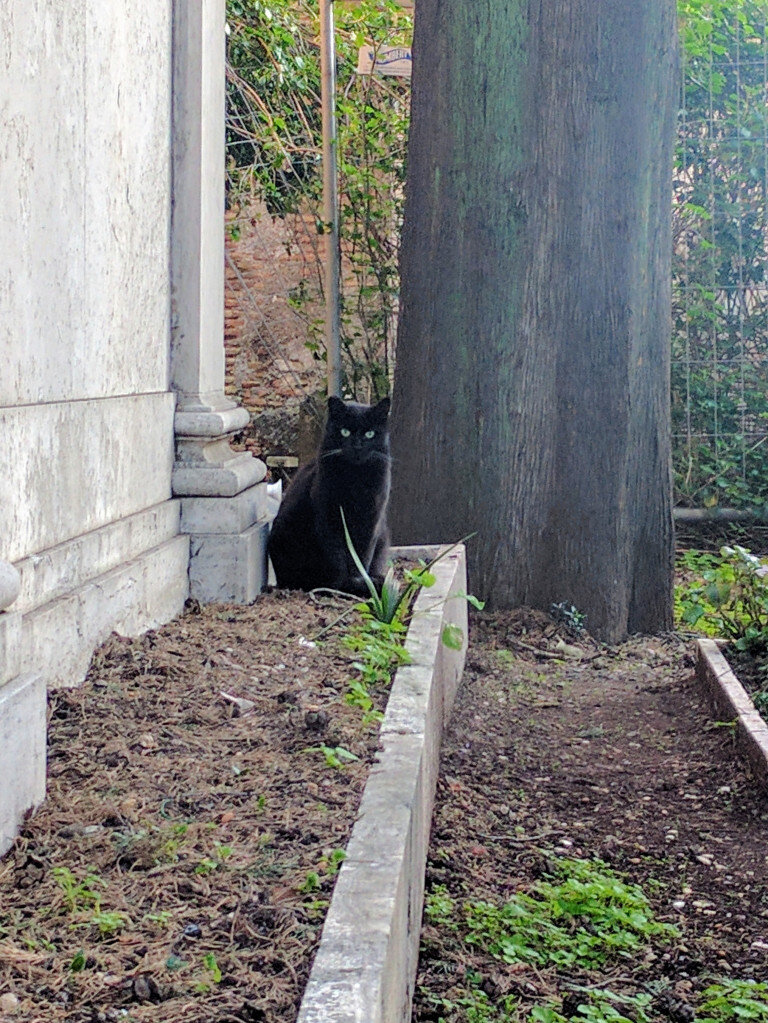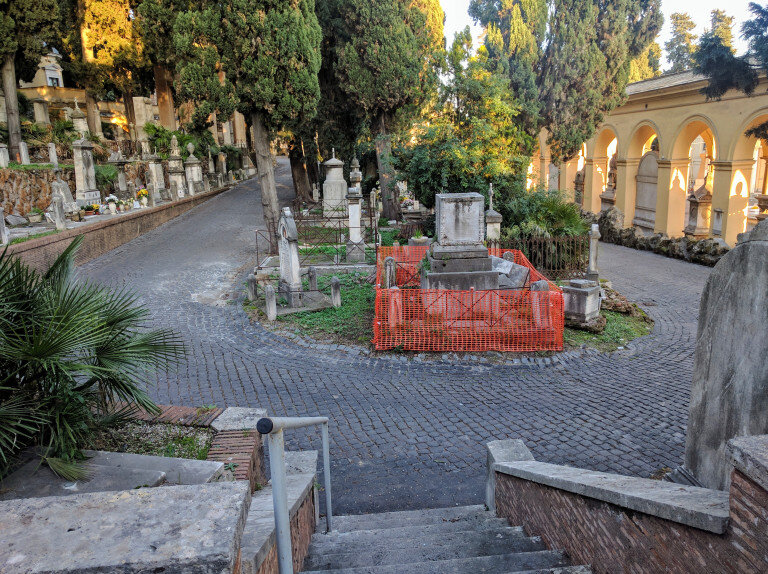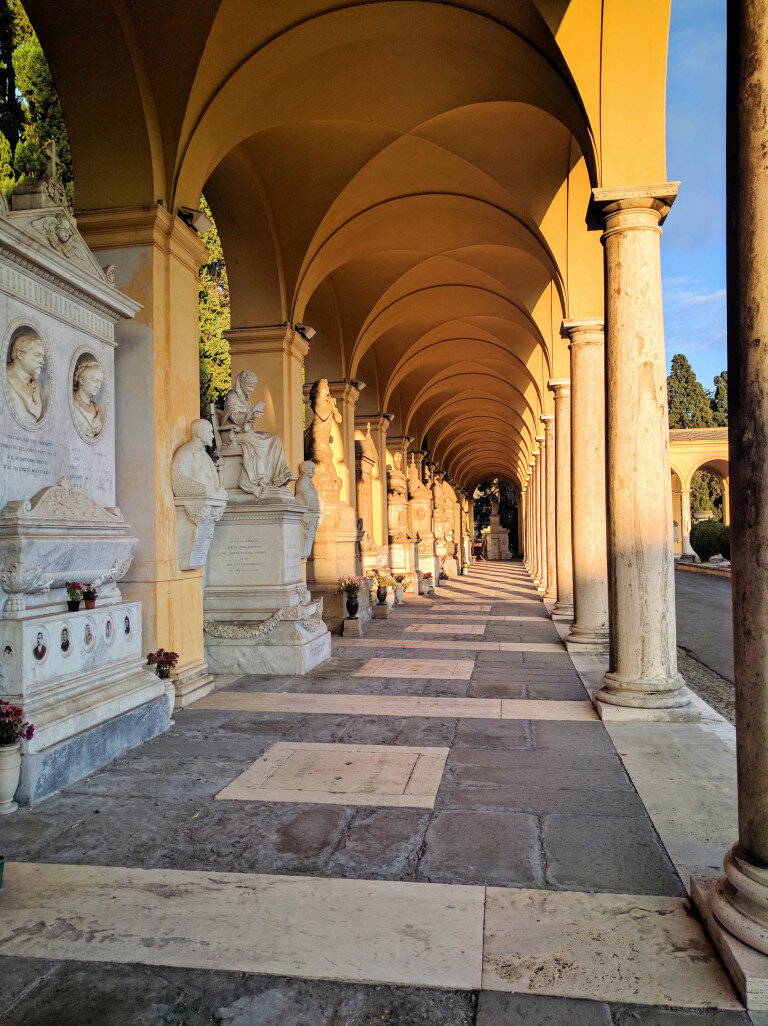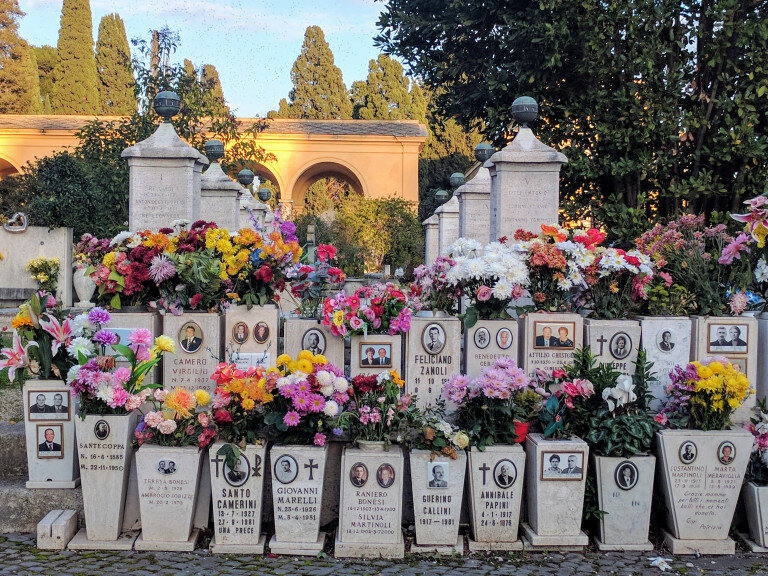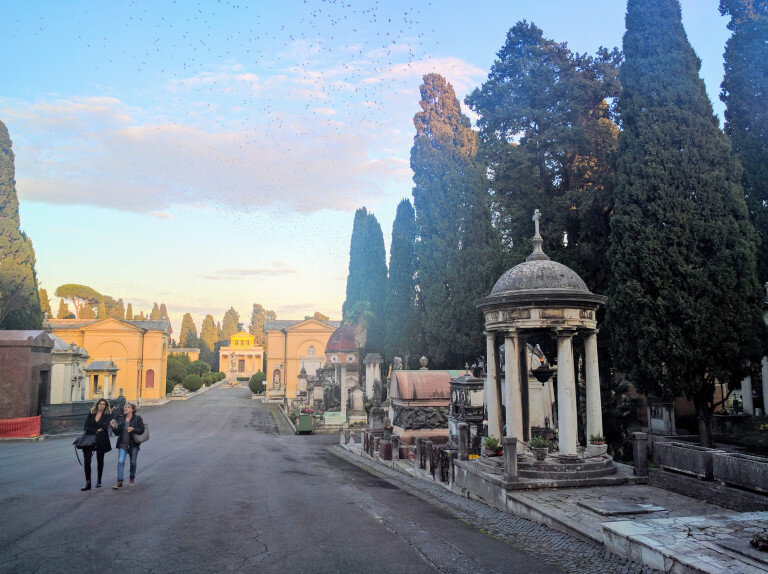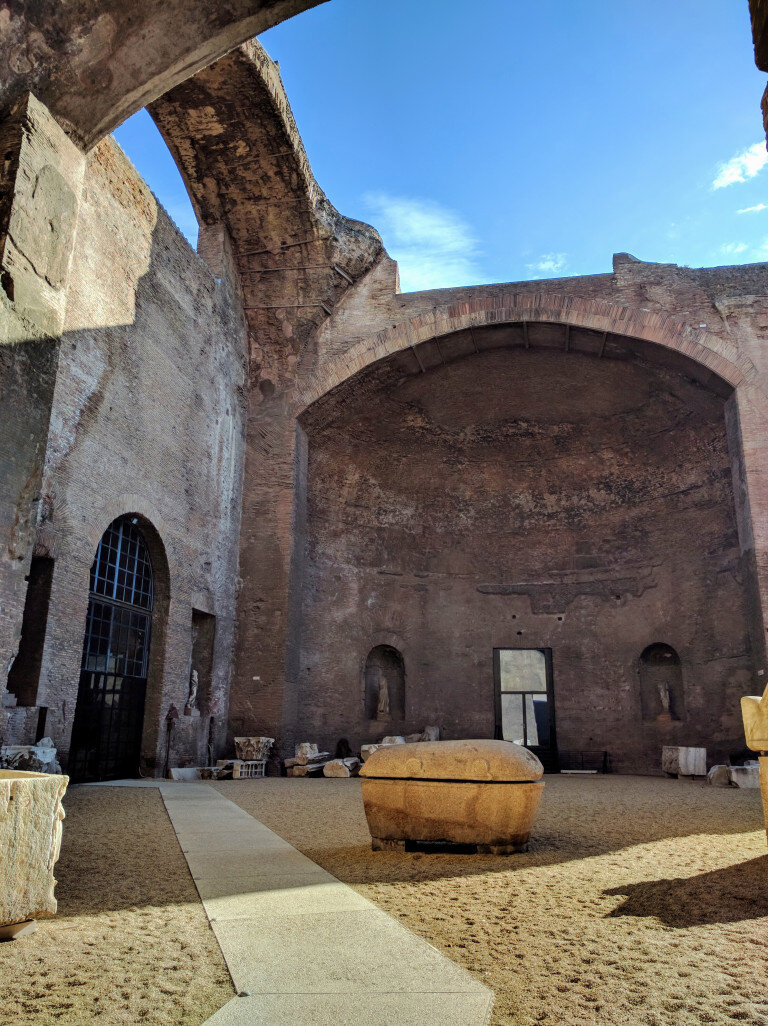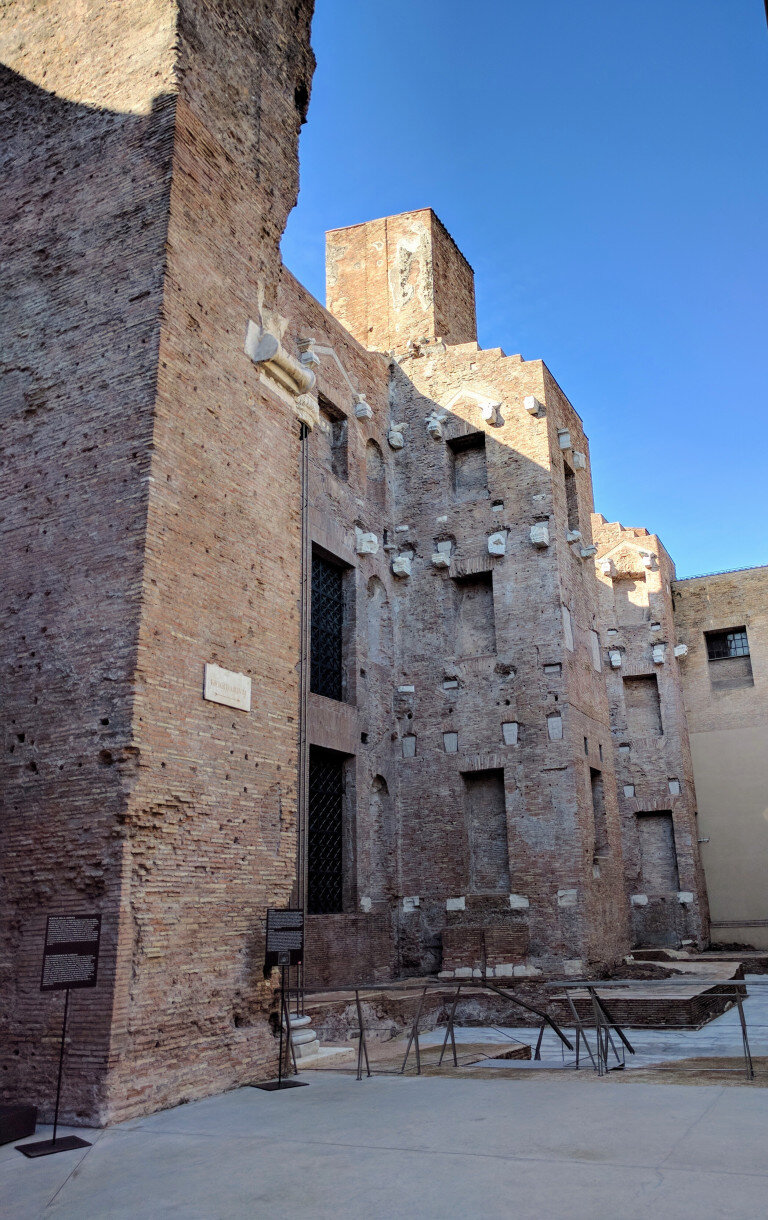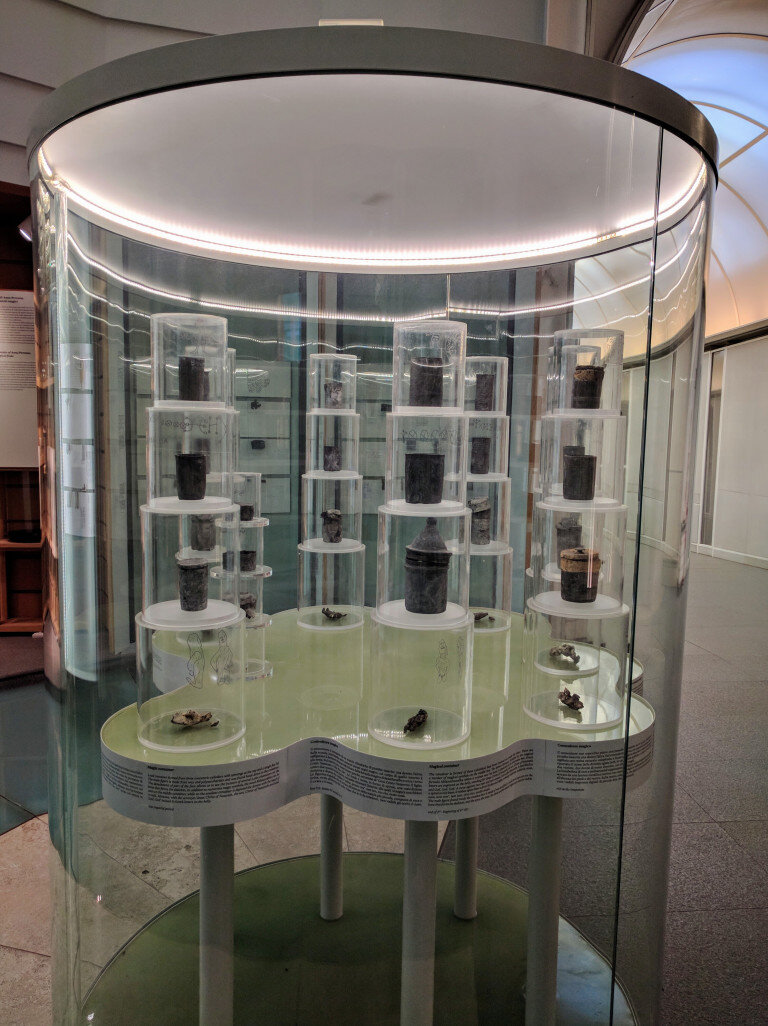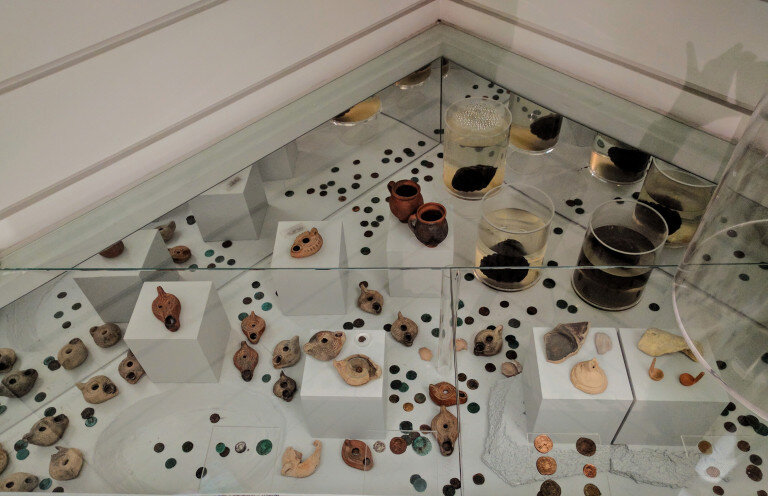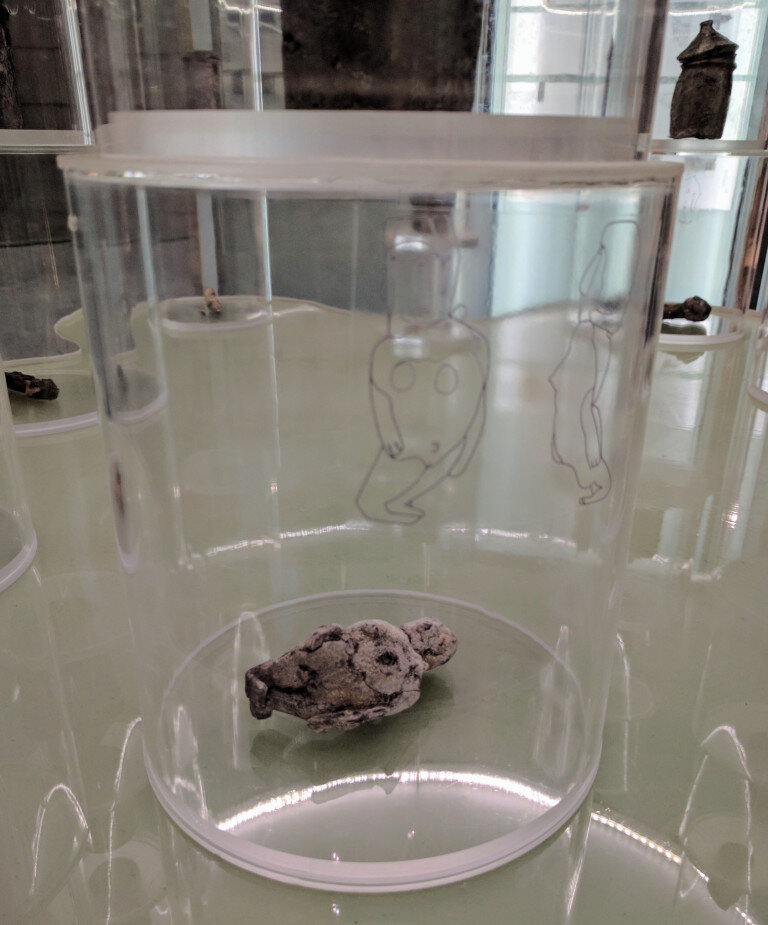Valle Diaries: Rome
This is gonna be a doozy… I spent a few days in Rome visiting my lovely friend Kate, who is now in her final year of the M.Arch program at Notre Dame. Because Notre Dame has a focus in classical architecture, their students are required to spend the first semester of their thesis year in Rome. Kate was an incredible tour guide because not only had she been in Rome and around Italy for the last few months, but she also has a degree in art history and understands the art and architecture of the city at a much deeper level than I can fathom. She was in finals so unfortunately she couldn’t spend every waking moment with me telling what to appreciate, but I was so grateful to have her perspective!
I think that to truly appreciate this city I would need to get a Ph.D in Greco-Roman history, and than another in art history, and I miiiiiiight feel ready to come back and soak it all in. For me, at this point in my life, it was an incredibly overwhelming and wonderful experience. THE FOOD. THE ART. THE ARCHITECTURE. THE GARDENS. THE SHOPPING.
Day One: Centro Storico & Trastevere
I arrived in the late afternoon, and Kate took me on a walking tour around our neighborhood (Centro Storico). We ended up walking about 9 miles in only a few hours!
I loved the Piazza Navona! Its racetrack proportions (it used to be a racetrack and was sometimes flooded for ‘sea’ battles) sort of propel the eye through the space and the gorgeous fountains draw the viewer up to them. We also wandered by the Trevi Fountain, which was so packed with tourists it was difficult to move. The fountain is almost comically large in the plaza, and so breathtaking in the way that some of the stone was left natural and jutting, the fountain seems more powerful because of it. The fountain was also looking super great because apparently it was refurbished last year. Good timing!
Next were the Spanish Steps — supremely good people-watching…
We went over to Trastevere for some wine and cheese while we waited for the Capitoline Museums to open. Apparently there was a 1 Euro entrance fee that night, but by the time we made it over to the museum the line was 80 billion people long! Who knew 6 Euros would be the difference between visiting and not visiting a museum?
The Temple of Ercole Vincitore is near the Tiber River and I think one of the most adorable ruins I have ever seen. It was dedicated to Hercules in the 2nd Century BCE. The fact that it was round, when most temples are rectangular, and the way it seemed to very assertively address the street charmed me.
Clockwise from top left: The bridge to Trastevere with St. Peter’s Dome in the background; Roman Forum at night; Tiber Island; and Tempio di Ercole Vincitore.
Day Two: The Colosseum, Palatine Hill, Roman Forum, Borghese Museum
I woke up the next day armed with my Roma Pass — a pretty good deal for a quick trip to Rome. I bought it at the tourist information booth in the Fiumicino airport, so while the airport train wasn’t included, transport from the central station to my AirBnB was. The 72-hour card gets you into two sights free, and the rest at a discount, and includes public transport. The 48-hour includes one sight and public transport. I used my card to get into the Colosseum, Forum and Palatine Hill (all one ticket), and then the Borghese Museum; this is a pretty common use since both sights are ‘must-sees’ and pricier.
I got up really early to beat the lines at the Colosseum and decided to trot around my neighborhood for a little bit to see some things without people. It’s amazing what just an hour or two earlier will do for the experience. I went back to the Trevi Fountain to see it with hardly anyone else around. Along the way I got to view Trajan’s Market, and the forum of Augustus.
I was so happy to be up so early and see some of these places without the crowds. It takes the edge off of mainstream tourism, and leaves more time in the afternoon for wine-drinking when all of the big crowds are out. I thought the Colosseum was pretty spectacular, it was fun to imagine it full of drunk, chanting, blood-thirsty Romans. The expense that emperors went to put on these fantastically creative shows must have been unreal. It seems like a very creative endeavor, designing sets and costumes for people to fight to the death.
My favorite parts of the day however, were definitely the Roman Forum and the Palatine Hill. The layers of history and, what I saw as comically large, scale of the temples and monuments was astounding. Some of the temples are gigantic by even today’s notion of gigantic — it is incredible that some of these structures were erected at the beginning of the Common Era! Wandering around the Palatine Hill was remarkable because it is basically an accumulation of rich people’s homes over several centuries — I wonder how much of the ‘hill’ is still a ‘hill’.
Top row, left to right: The Roman Forum from the Palatine Hill; Domus Flavio ruins; Hippodrom of Domitian. Middle row, left to right: The Colosseum from the Palatine Hill; former vineyard on Palatine Hill; my dorky tourist photo in front of the Roman Forum. Bottom row, left to right: Palatine Hill from below; Tempio di Antonino e Faustina; Bioparco di Roma.
The Domus Flavius was wonderful, the Emperor seemed to really like walking gardens and had quite a few of them. I also really liked this ruin of a reflecting pond with a little hill in the middle and a walkway out to the hill — I think it is a typology that would be worth repeating in a landscape some day. I thought the Hippodrome of Domitian was quite lovely — and contrary to my previous belief that a hippodrome was used for horse racing, this was actually used as a place of reflection, where one would take a constitutional walk or ride after a meal.
The Roman Forum was the buzzing center of Roman life where citizens could come and listen to political issues, and where several important temples — those of Vesta, Julius Caesar, and Constantine to name a fraction… The signage and interpretation was really spotty, so I am glad I had a guidebook with me. If I had had my Millennial hat on I would have remembered to download an app or two, but I think (?) I got the gist of the place.
The Temple of Antoninus and Faustina struck me as comically grand… The temple was dedicated by Emperor Atoninus and the Senate to his wife, Faustina, and then when he died in 161 CE, it was dedicated to both of them. This, among many others, monument demonstrates the grandiosity of monuments and status in this Roman world. I don’t think the picture does it justice, but you can see the people inside for scale. And to think — this building was not the tallest in the Forum is nuts…
I think I must have been most excited however, to run across this pair of beautiful bunnies! I stopped in my tracks and ogled for way too long (In case you don’t know I am a rabbit lady). There was something a little eerie about this pair. The fact that it was just the two of them, and they were so big. If there had been a warren of them, I might have been less suspect, but since it was just the two of them it got me thinking… Could these rabbits be the ghost of Emperor Nero and his niece/wife Agrippa?! The older, slower-moving one (probably Nero) let me pet them! So despite his warlike tendencies, his incarnated or ghostly rabbit self was quite docile.
I took the metro up to the northeast and Piazza de Popolo; after taking a break for a bruschetta and an espresso, I wandered around the lovely Bioparco di Roma until I finally found the Borghese Museum and could secure a ticket for later in the evening. The museum only gives two-hour windows with advance reservation, so I felt pretty lucky to get a same-day appointment. The Borghese Museum was full of stunning Bernini sculptures and Caravaggio paintings, I only wish that I had had Kate with me to give me the rundown on all of these pieces. The craftsmanship and the humanity was palpable, and really inspiring!
Left to right: David, Bernini, 1623-4; Bernini’s sculpture of Apollo and Daphne (1623-5) depicting Apollo’s attempted assault of Daphne, she escapes by turning into a tree; Detail of Apollo and Daphne.
Clockwise from top left: La Madonna dei Palafreniere, Caravaggio, 1605-8; La Verita, Bernini, 1645-52; Basket with Pumpkins, Unknown, 1630; Ratto di Proserpina, Bernini 1621-2.
Basket with Pumpkins was my favorite painting; the painter is unknown but was trained in the style of Caravaggio. I really liked that the subject (pumpkins) was unusual and that the palette was so subdued. This painting was featured in a collection of Italian still-life paintings that all seemed to feature roses and grapes (which is a beautiful subject), and beyond the fact that this painting is gorgeous — it did not have roses grapes, which really made it stand out.
It was about 8pm by the time I left the Borghese and high time for more wine and food. I met up with Kate and some of her classmates and we had a spectacular meal of bruschettas, fried zucchini flowers, fried potatoes, mussels, gnocchi, and pastas. I was so pleasantly full, I still dream about it.
Day Three: Cemeteries & Vatican City
The next morning Kate and I went to the Protestant Cemetery in the southern part of Rome. It was a really peaceful place, and it bordered the old city wall, which was built around/into a pyramid. The pyramid was so well-preserve that it was hard to believe it was so old, but it was built between 18 and 12 BCE as a tomb for rich Roman politician Cestius. It was later incorporated into the Roman wall in 272 CE. John Keats is buried in this cemetery, but his life was pretty unfortunate. I was not familiar with his story until coming to the cemetery but I guess he had a very successful career in the UK, and then in 1820 he began to show signs of tuberculosis. His doctors advised him to go to Italy for fresh air, but he ended up dying within a few months of his arrival.
After our cemetery trip I headed to the Vatican on the polar opposite of town. It was very busy by the time I arrived in mid-morning, but I was happy I got there when I did because the lines only seemed to get longer. As I approached the Vatican City I felt very uncomfortable with the gigantic wall. At a time in history when I am feeling very agitated by the state of politics in my country, the sight of this gigantic wall which separates one of the largest concentrations of wealth and power in the world from the rest of the city, it really angered and frustrated me. In my mind this wall was a symbol of division, oppression, capitalistic power, patriarchy, Western supremacy, and even white supremacy. I have a discomfort with religious structures in general, having been raised on the West coast as a hippie heathen. In fact a lot of my experience of Rome was colored by the feeling of being an outsider since I do not understand, really anything, about these stories and the paradigm within which they exist. The narratives that have driven so much artistic expression, oppression, and development are completely lost on me.
Although I have seen friends and family benefit from the structure that these institutions provide, the history of Christian institutions, and of the Catholic church in particular, has not been a particularly rosy one. It felt odd to me strolling into this gigantic, expensive, monument to an institution guiding moral frameworks in politics that work against my own interests as a secular woman. However, as half of my family is Catholic, and some of my friends as well, I had to see what all the fuss was about…. And I have to admit it was pretty fantastic.
So St. Peter’s is pretty breathtaking and gigantic. Apparently all of the other cathedrals in the world can fit inside it comfortably… You know, sometimes it’s not the size that counts.
After another few espressos and another trek on public transit, I headed out to another cemetery, the Cimitero Monumentale de Verano. I thought briefly about going to see the Appian Way, but that would have entailed more walking and I was SO tired after two days of nonstop walking on cobblestones…
The cemetery was beautiful, but much spookier than the Protestant Cemetery. I think it had to do with the size of the tombstones, and the fact that the cats were not friendly — they just kind of sat there and stared at people like they were possessed or feral. As I was sketching, I looked up and saw that the starlings were starting to fly around since it was dusk. It was completely mesmerizing and I’m not sure if it’s audible in this video, but the chattering was really loud! It is incredible how such little birds can make such a visible impact on the sky when there are enough of them.
I trucked myself back into town and met up with Kate for one last fantastic Italian meal. We went to Ai Spaghetteria, which specializes in Roman food, for a meal of seafood Risotto, zucchini flowers, fried cheese, lasagne, and saltimbocca alla romana (veal with ham and butter, OMG). Paired with a vase of cheap white wine it was perfection.
Day Four: Baths of the Diocletian
On the morning before I left I went to the museum in the Baths of the Diocletian, which is a very overwhelming collection of awesome artifacts and information — all of which are organized rather poorly. When I walked up to the museum there were lines of town cars and lots of people in military uniform and suits milling around. I asked someone in English what was going on and they basically motioned for me to ‘bugger off’. As I was perusing the galleries and admiring a statue of Isis, a man in Catholic-y religious garb strolled by flanked by a jillion people in smart suits, as well as Italian military. I asked someone what was going on in Spanish and they told me the minister of the interior and a cardinal were visiting the museum that day.
The museum is built within the ruins of a major bath complex, with beautiful arches and niches where marble statues once stood.
I think my favorite exhibit in the museum was a little exhibit about the magical fountain of Anna Perenna. The fountain was discovered in 1999 during work to construct a parking facility in Piazza Euclide in Parioli. The fountain was in use as a spring from the 4th century BCE to the 5th century CE! Artifacts relating to religious practices, such as 523 coins thrown in for good luck, pine cones and eggs as symbols of fertility, as well as 75 lamps used as votive offerings.
Anna was an ancient nymph whose cult center was on the Via Flaminia, and on March 15th a ‘wild festival’ took place to celebrate her cult. The fountain had an altar with two inscribed bases which were dedicated by Suetonius Germanus and his wife Licinia in a fulfillment of a vow for victory. The victory? Likely a competition during the Ides of March to drink the most cups of wine, singing, or miming contests. The fountain now has a plaque to dedicate its location.
The magic containers, pictured below, are formed from three lead cylindrical bases inserted Russian-doll style. Magic formulas are inscribed on the outside. A figurine of wax molded around an animal bone is placed head-first into the containers.
I hope to come back to Rome some day with a more focused agenda (a particular century of sculpture, a particular type of architecture) to glean more from my experience. I consider this trip a good taster for this complex (and tasty!) city.

